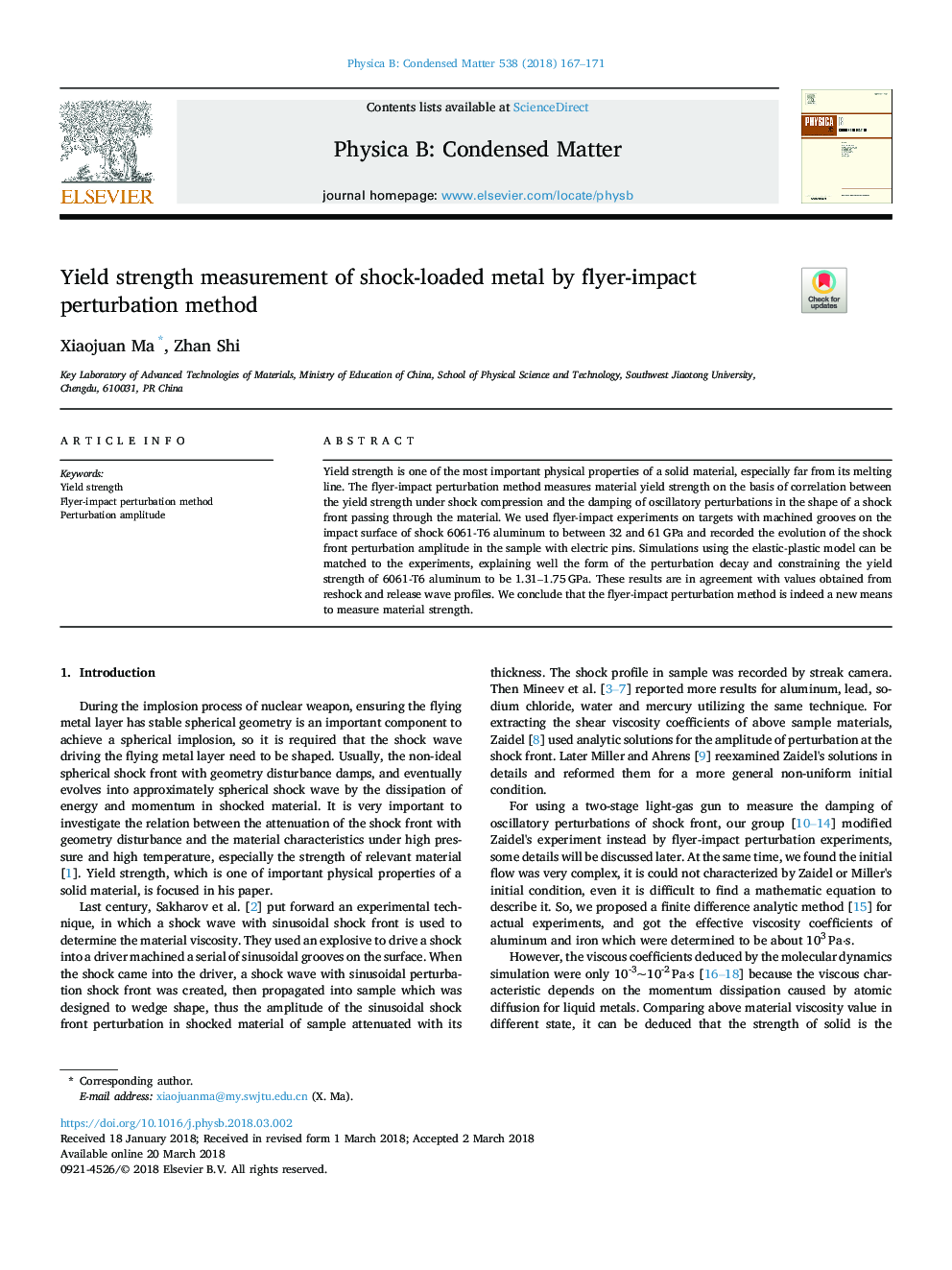| Article ID | Journal | Published Year | Pages | File Type |
|---|---|---|---|---|
| 8160710 | Physica B: Condensed Matter | 2018 | 5 Pages |
Abstract
Yield strength is one of the most important physical properties of a solid material, especially far from its melting line. The flyer-impact perturbation method measures material yield strength on the basis of correlation between the yield strength under shock compression and the damping of oscillatory perturbations in the shape of a shock front passing through the material. We used flyer-impact experiments on targets with machined grooves on the impact surface of shock 6061-T6 aluminum to between 32 and 61â¯GPa and recorded the evolution of the shock front perturbation amplitude in the sample with electric pins. Simulations using the elastic-plastic model can be matched to the experiments, explaining well the form of the perturbation decay and constraining the yield strength of 6061-T6 aluminum to be 1.31-1.75â¯GPa. These results are in agreement with values obtained from reshock and release wave profiles. We conclude that the flyer-impact perturbation method is indeed a new means to measure material strength.
Keywords
Related Topics
Physical Sciences and Engineering
Physics and Astronomy
Condensed Matter Physics
Authors
Xiaojuan Ma, Zhan Shi,
